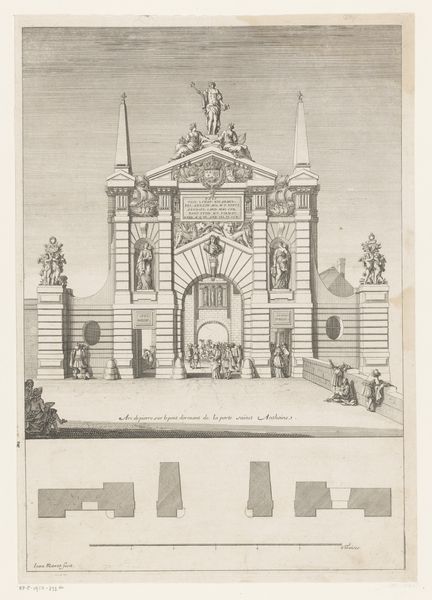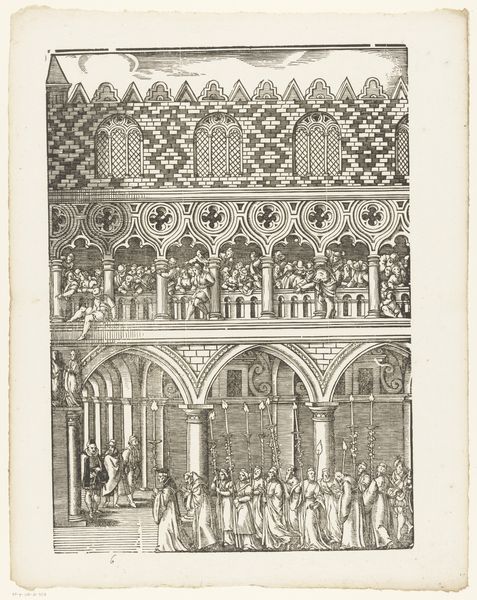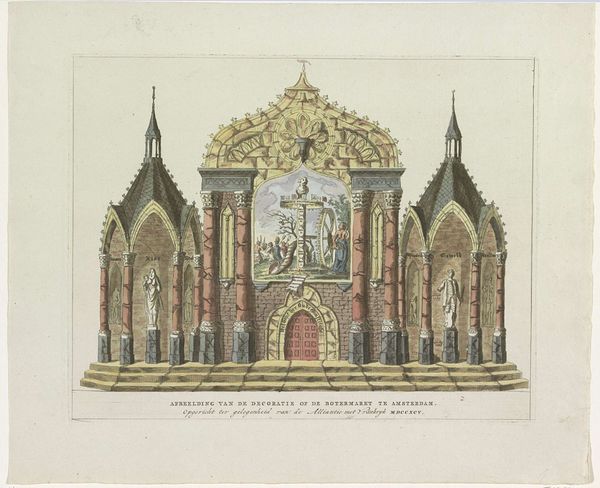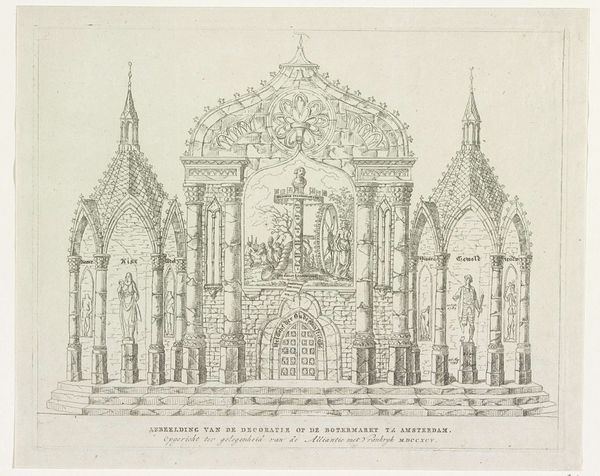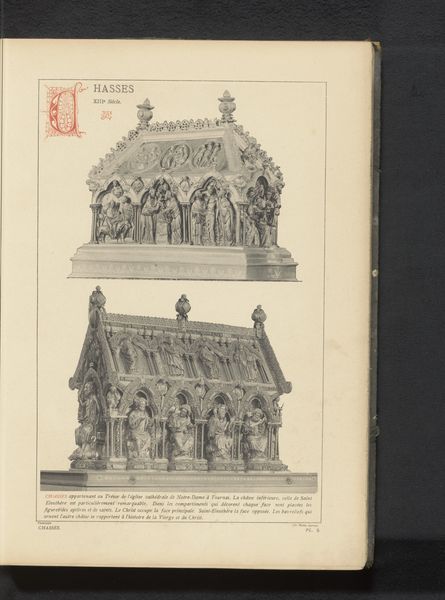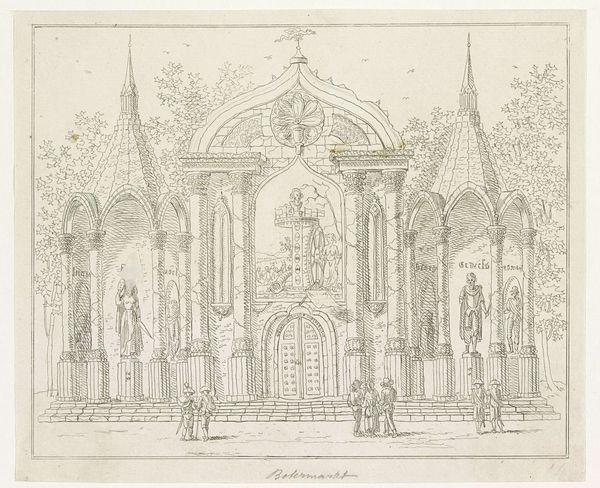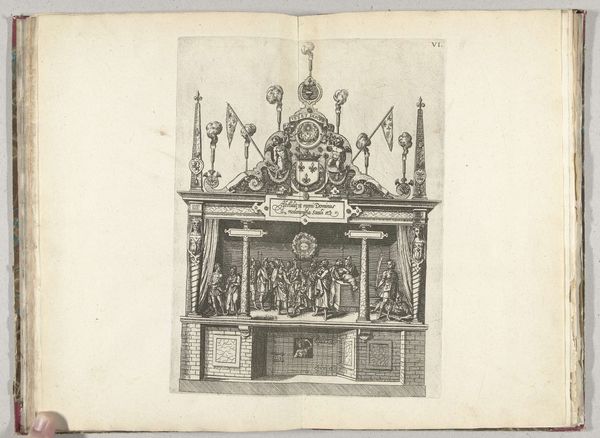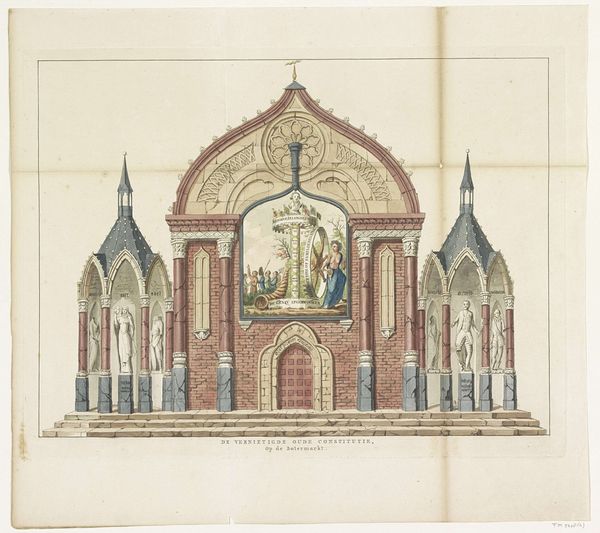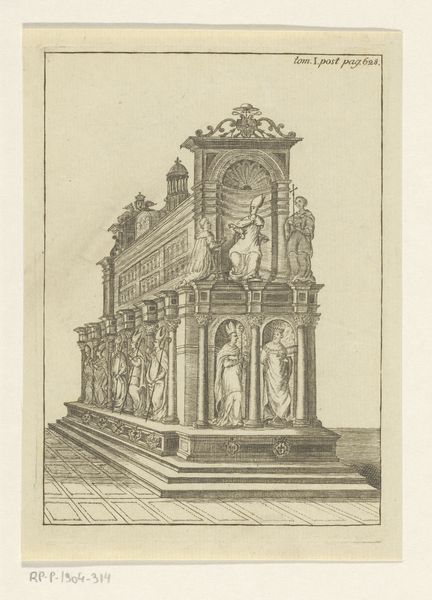
print, metal, engraving
#
baroque
# print
#
metal
#
old engraving style
#
figuration
#
history-painting
#
engraving
Dimensions: height 125 mm, width 92 mm, height 101 mm, width 180 mm, height 218 mm, width 188 mm
Copyright: Rijks Museum: Open Domain
Curator: Looking at this print entitled "Two Reliquaries," etched sometime between 1676 and 1755 by Pieter Balthasar Bouttats, my initial thought is how intricately rendered it is. There's such care in the detail, especially considering its scale. It's as if he's captured entire architectural marvels on a single sheet. Editor: The first word that comes to mind is "oppression." Seeing these representations of power, of institutions that have historically controlled narratives and bodies…it makes me think of the countless untold stories that are hidden within the shadows of these very reliquaries. Curator: That's a very potent response. Considering the function of reliquaries, as containers for sacred relics, symbols of faith, Bouttats offers an interesting view on the church power and art’s role in representing, and therefore reinforcing, that power structure. We are literally looking at objects meant to inspire religious awe. Editor: Exactly. And who benefits from that awe? How is this reverence constructed? What did those "holy" relics really stand for in their own time? Did they reflect or challenge injustices? This image brings up questions of access, of who gets to control and benefit from the narratives around these historical figures represented, literally placed upon a pedestal for reverence. It almost feels violent when thinking of colonial subjugation. Curator: I agree. This image is an echo chamber to the institutional power of religion. The craftsmanship emphasizes this authority, reflecting both religious patronage and the church's central place in society. These objects embody baroque sensibilities, celebrating visual drama that in this instance bolsters their symbolic meaning, and in turn influence and power. Editor: And think of the indigenous spiritual practices and objects suppressed, destroyed, and replaced. To contextualize it for modern times, it reminds me of contested objects, and how institutions play an active role in deciding who gets to lay claim to a culture's belongings. Curator: Absolutely. Bouttats’s “Two Reliquaries,” through their meticulous portrayal and historical context, serve as complex documents which reflects on issues surrounding art, power, and belief throughout European history, but not without erasing different people's history at the same time. Editor: It forces us to really question whose stories are celebrated and protected versus those that are actively silenced, distorted, or erased by these same institutions. It really shows us the power that museums still possess today, how it carefully shapes collective historical and cultural memory.
Comments
No comments
Be the first to comment and join the conversation on the ultimate creative platform.


